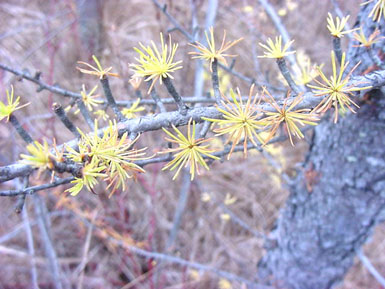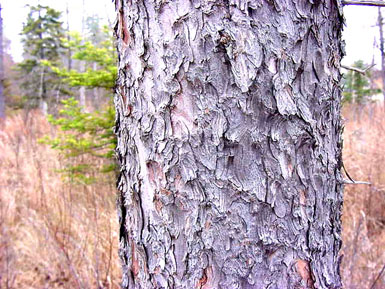Form: This is a small to medium-sized tree reaching heights between 40 and 80 ft and dbh of 1-2.5 ft. It normally has a straight bole, when growing in the open, but develops crooks in the stem when other stems compete.
Needles:
Arrangement: clustered densely on spur-like short shoots
Length: 3/4-1 1/4" long
Other: blue-green in color during the growing season and then turns gold in the fall

Bark: The gray bark is thin and smooth when young becoming red-brown and scaly with age.

Cones: It's small (1/2- 3/4 in.) oblong-ovoid cones are closely attached to the twig.
Distinguishing characteristics: This is a deciduous conifer. (It looses it's needles in the winter).

Range: It is a boreal forest species with a range extending south into the Lake States and New England. Populations occur north as far as Alaska.
Silvics: It is very intolerant of shade. It prefers cold climates and is often found in sphagnum bogs and swamps. It is prone to wind throw because it develops a shallow root system.
Ecological and cultural importance: Today it is commercially produced for pulpwood, and it the past it was used for mine timbers and railroad ties. It is an important source of browse for the snowshoe hare. White-tailed deer and moose generally avoid this species, but caribou sometimes consume it in small amounts.